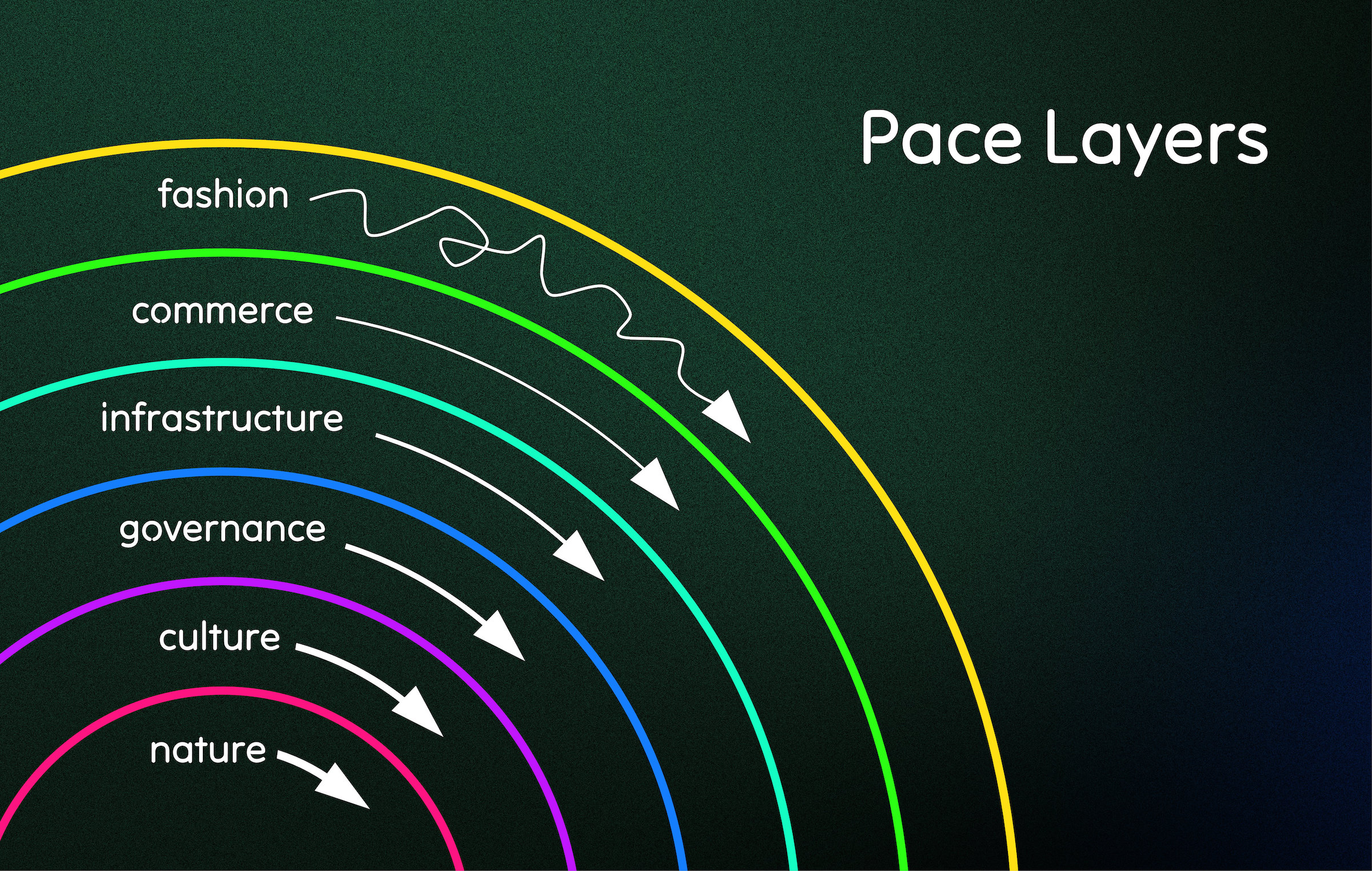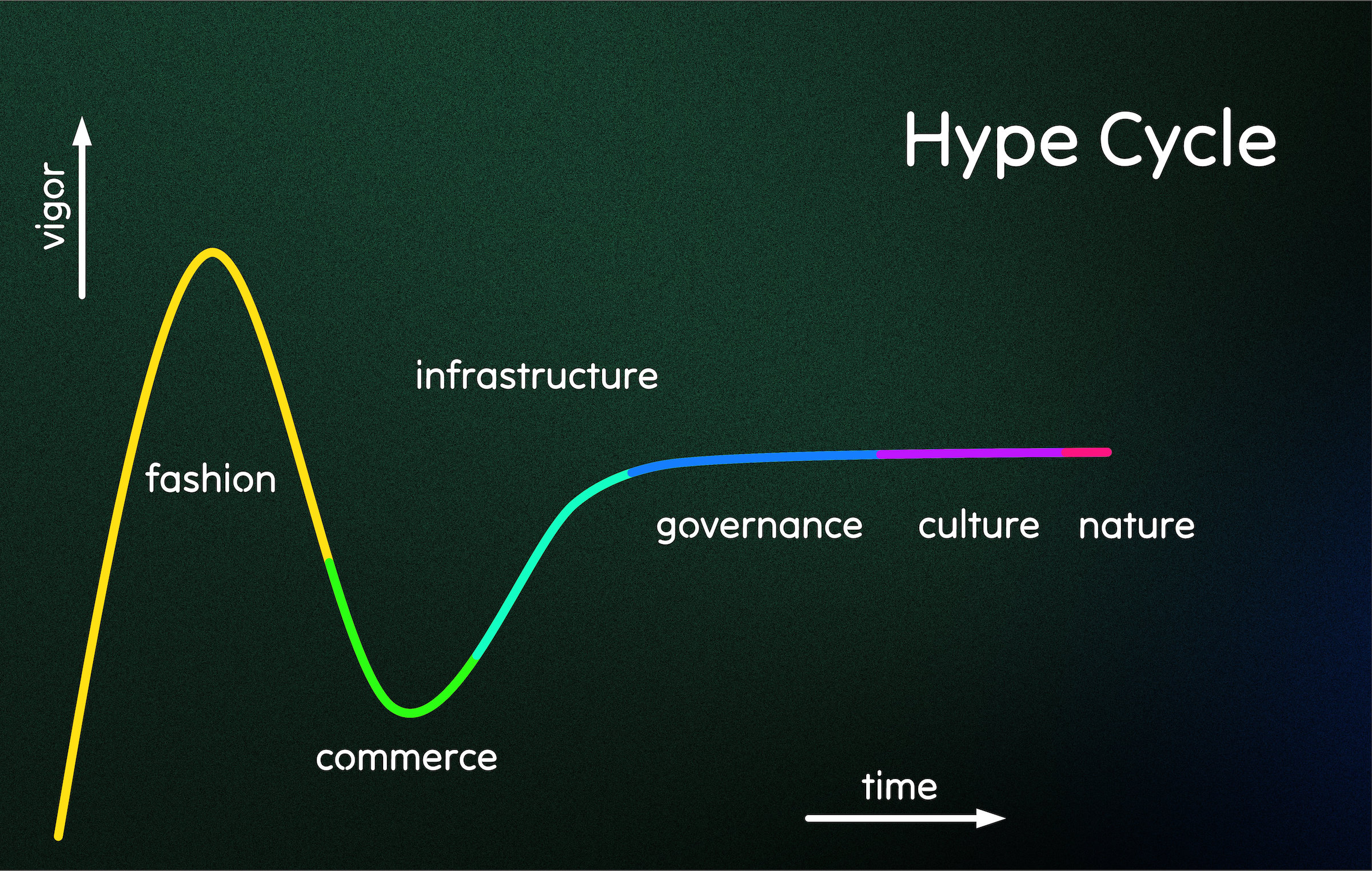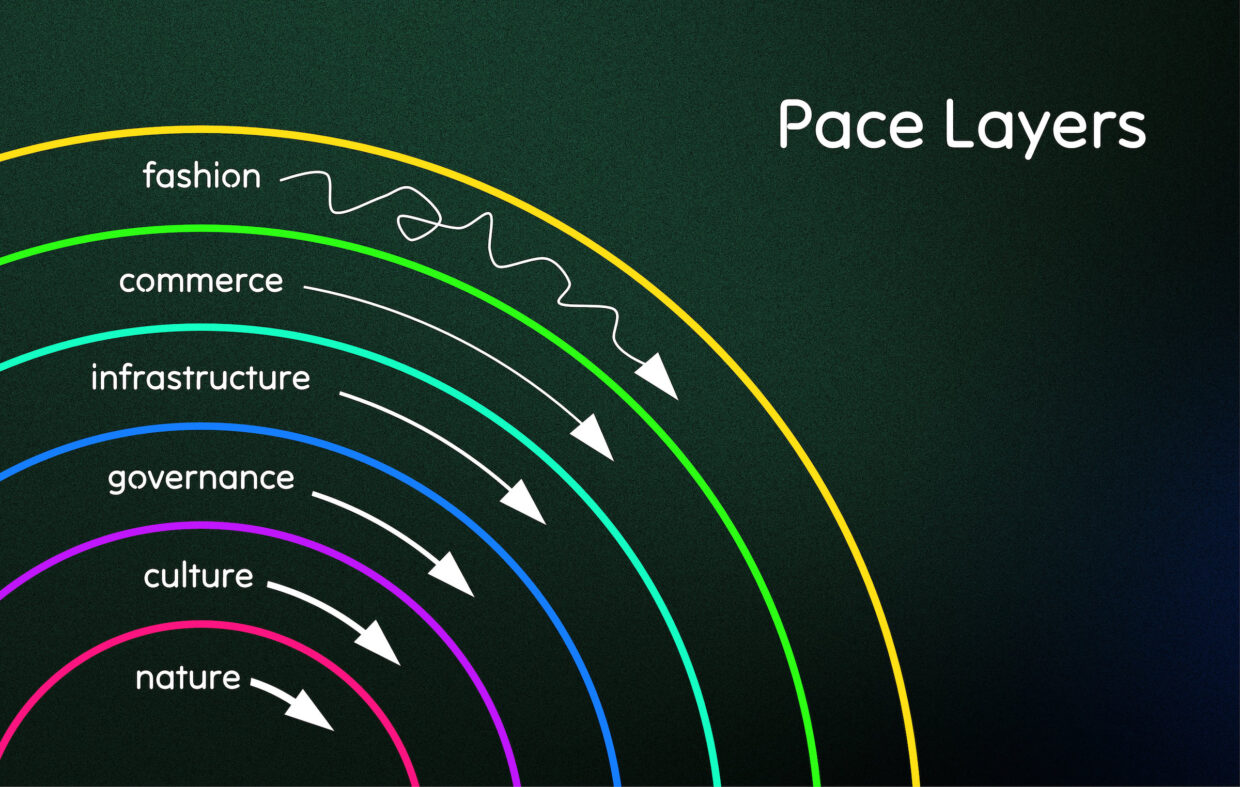The art of change has to do with being a good traveller. You need to know what direction you want to go, but also WHEN you CAN, or SHOULD change direction. Pace layering has a wonderful, simple way of showing how change in fundamental layers in our life is hard and why. It also informs you HOW change can be started, supported and how it might break things.
The image below, is my version of an image made by Stewart Brand in his book “the Clock of the long now”. It shows quite intuitively how layers in the pace layers interact. I tend to think of them as layers of rubber bands that are inter connected.

In a conversation with Ron Kersic in our podcast It’s Just A Model (link in the comments), we talked about this and found the dynamic of ‘snapping back’. Snapping back is what happens if a layer wants to change faster, than the underlying layers can manage. Because underlying layers are incrementally slower to move, the change in layers above cannot happen too fast. If they do, you’re bound to snap back, perhaps with a small incrementation of progress, or relapse.
In the role as change maker one needs to be cognizant of the mechanics of these layers. You CAN make massive change by introducing new trends, or persuing new tech, but these things will only get a real foothold when these things are also grounded in the layers below: there is a commercial model, a social model, there is infrastructure and some legislation subsequentially.

That dynamic, or movement can also be seen in the gardener hype cycle graphs. We see a lot of movement, it stalls at a certain point, snaps back, and when other subsequent layers recover, adjust, or conform, it levels out at a ‘reasonable’ level, all under the influence of layers interacting with the layers above and below, dragging them to change. In my rendering of the hype cycle I try to explain its dynamics by colouring in the phases by the corresponding moving layers.
This dynamic is paramount to understand in orchestrating change. BEFORE one changes a top layer, one needs to be informed on how to change the layers below, and lay the seeds of what’s to come. OR as most innovation does right now: follow the hype cycle, snap back and do it again.
